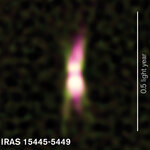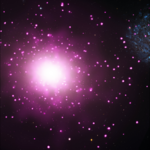Space

This is part 3 of my series on Mars, planet of surprises, great to explore, not so great to colonize. In "Is it as good a place to live as a desert? we saw that Mars is a more inhospitable place than the coldest driest deserts on Earth, and has severe supply issues from Earth. It is a place for highly trained hardy explorers like the early Apollo astronauts.
Then in Life on the edge in cold dry deserts of Mars, we saw that there are possible habitats for life on Mars. Human visitors with their hundreds of trillions of microbes could contaminate the planet. We absolutely…

This is part 2 of my series on Mars, planet of surprises, great to explore, not so great to colonize We saw so far that Mars is less hospitable than the coldest driest deserts on Earth. This is Wright valley, which is colder than it looks. It's an extremely cold place in Antarctica which only stays free of ice because it is also so very dry. The most hospitable areas on Mars may be similar, except for the near vacuum of its atmosphere. Surprisingly, in these extremely hostile conditions in Antarctica, you do get life, and this gives insight into possibilities for life on Mars…

An old star, IRAS 15445-5449, is "blooming" in the southern sky — it has begun to push out a jet of charged particles that glow with radio waves. And astronomers are on the hunt to determine why
IRAS 15445−5449 lies 23 000 light-years away in the southern constellation Triangulum Australe (the Southern Triangle).
The radio waves from the star's jets were detected with CSIRO's Australia Telescope Compact Array, an array of six 22-m diameter radio dishes near Narrabri in New South Wales (eastern Australia).
The flowering star is turning into one of the most beautiful objects…
In "Asteroid Resources Could Create Space Habs For Trillions; Land Area Of A Thousand Earths" I looked at a possible future where humans could colonize space and build habitats using materials from the asteroids. Later on, once we have fusion power able to build miniature suns to warm our new habs ,it would be easy to spread to the Oort cloud. Then, since Oort clouds of stars mingle, we would be well on our way to colonization of the galaxy
So, why haven't ETs colonized the galaxy already? It would be an extraordinary coincidence for an ET to evolve even as recently as a hundred million…

This is part 3 of my series on Mars, planet of surprises, great to explore, not so great to colonize. So this might be a good time to take a breather and review what we've found out so far. Mars is so very cold it would be a white snowball Mars if it wasn't so very dry. Part of the reason why it is so very dry is because the atmosphere is so very thin, well below the Armstrong limit. Not only does water boil at blood pressure, but also, over most of the surface of Mars, ice will turn directly into water vapour without ever going through a liquid phase. This is well beyond the limit of…

Mars looks quite hospitable in the photos, but all is not quite as it seems. Our Earth based intuitions lead us astray, and the planet is full of surprises. Though great to explore, it might not be so ideal as a second home.
Mars looks Earth like
You might think from the photos, that Mars looks like a reasonable enough place to live in. It looks pretty much like a desert landscape here on Earth, and you can imagine that if you set up lots of greenhouses, and use the resources of the desert itself to make new greenhouses, you could hope eventually to colonize the entire desert. …

IGR J18245-2452, located about 18,000 light-years from Earth in the constellation Sagittarius in a cluster of stars known as M28, is a neutron star with the peculiar ability to transform from a radio pulsar into an X-ray pulsar and back again.
The star's capricious behavior appears to be fueled by a nearby companion star and may give new insights into the birth of millisecond pulsars.
Neutron stars are the superdense remains of massive stars that have exploded as supernovas. IGR J18245-2452 was first identified as a millisecond radio pulsar in 2005 with the Green Bank…

If you began to travel to the star nearest to us after ol' Sol, named Alpha Centauri, it takes about four light years.
Now imagine there were instead 10,000 other stars crammed into that 25 trillion miles of space rather than none - that's the kind of density of a galaxy that was recently discovered.
M60-UCD1 is an ultra-compact dwarf galaxy near the massive elliptical galaxy NGC 4649, called M60, about 54 million light years from Earth, in the Virgo cluster of galaxies. It was discovered with NASA's Hubble Space Telescope and follow-up observations were done with NASA's Chandra X-ray…

In my last article, "Does Earth Share Microbes With Mars Via Meteorites - Or Are They Interestingly Different For Life?" I talked about the NRC study, which looked at the same meteorite data as Zubrin, and came to the opposite conclusion that any life on Mars could be interestingly different. What are the implications of this for our plans to explore the solar system? Do we need to be careful about transfer of life to Mars or back to Earth?
Could Martian life be harmful to Earth life?
Zubrin has presented another argument here. He says that because Martian microbes have not adapted to…

Robert Zubrin says that there are no contamination issues involved in colonizing Mars, because microbes get transferred between the planets all the time on meteorites. His ideas get a lot of publicity, and so did a paper earlier this year "The overprotection of Mars". However there is another possibility, that life on Mars might be interestingly different from Earth life.
So, how easy is it for a microbe to travel on a meteorite from Earth to Mars or in the other direction? Is this something that happens often, and can many species do this? Or is this something rare and unusual, that perhaps…